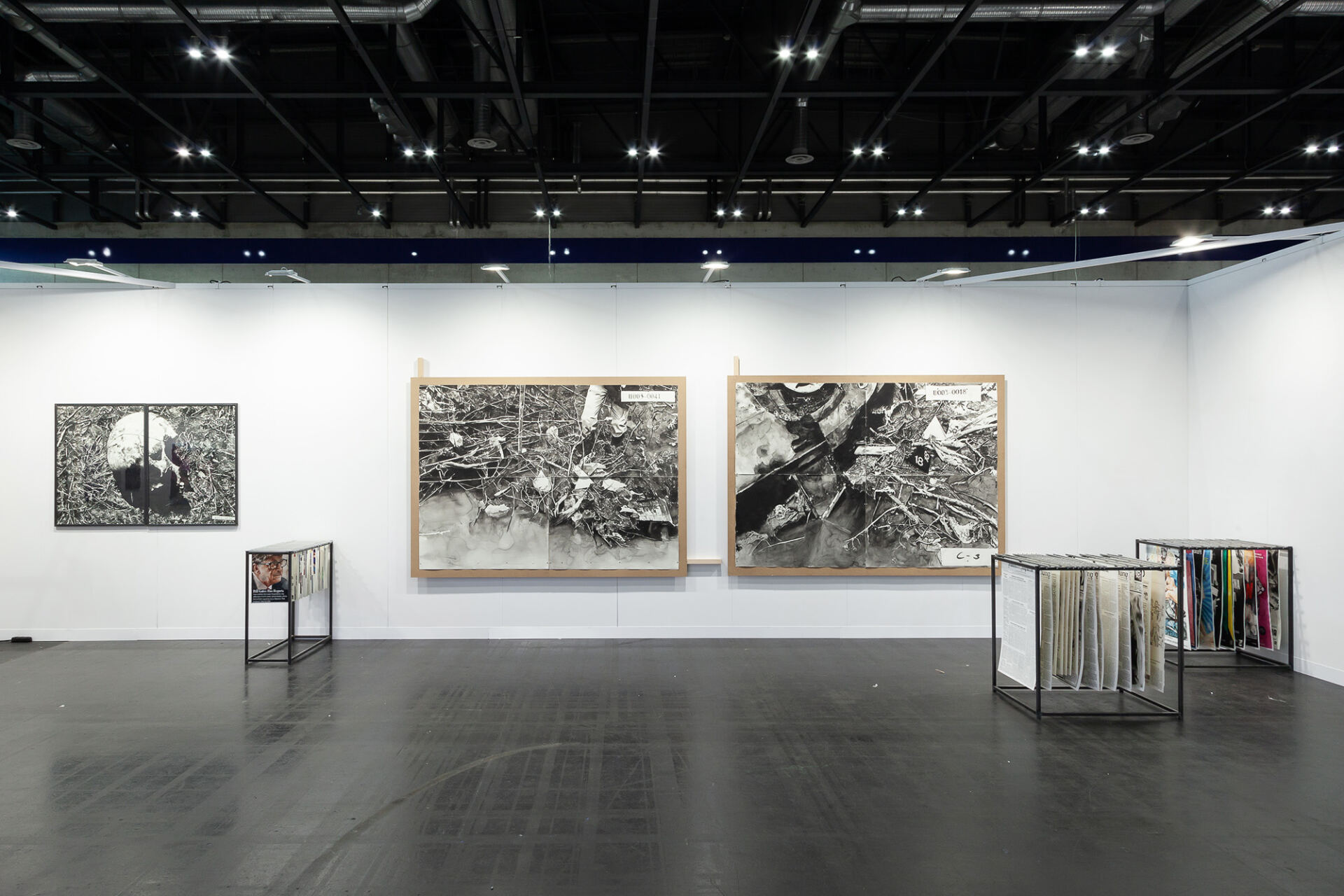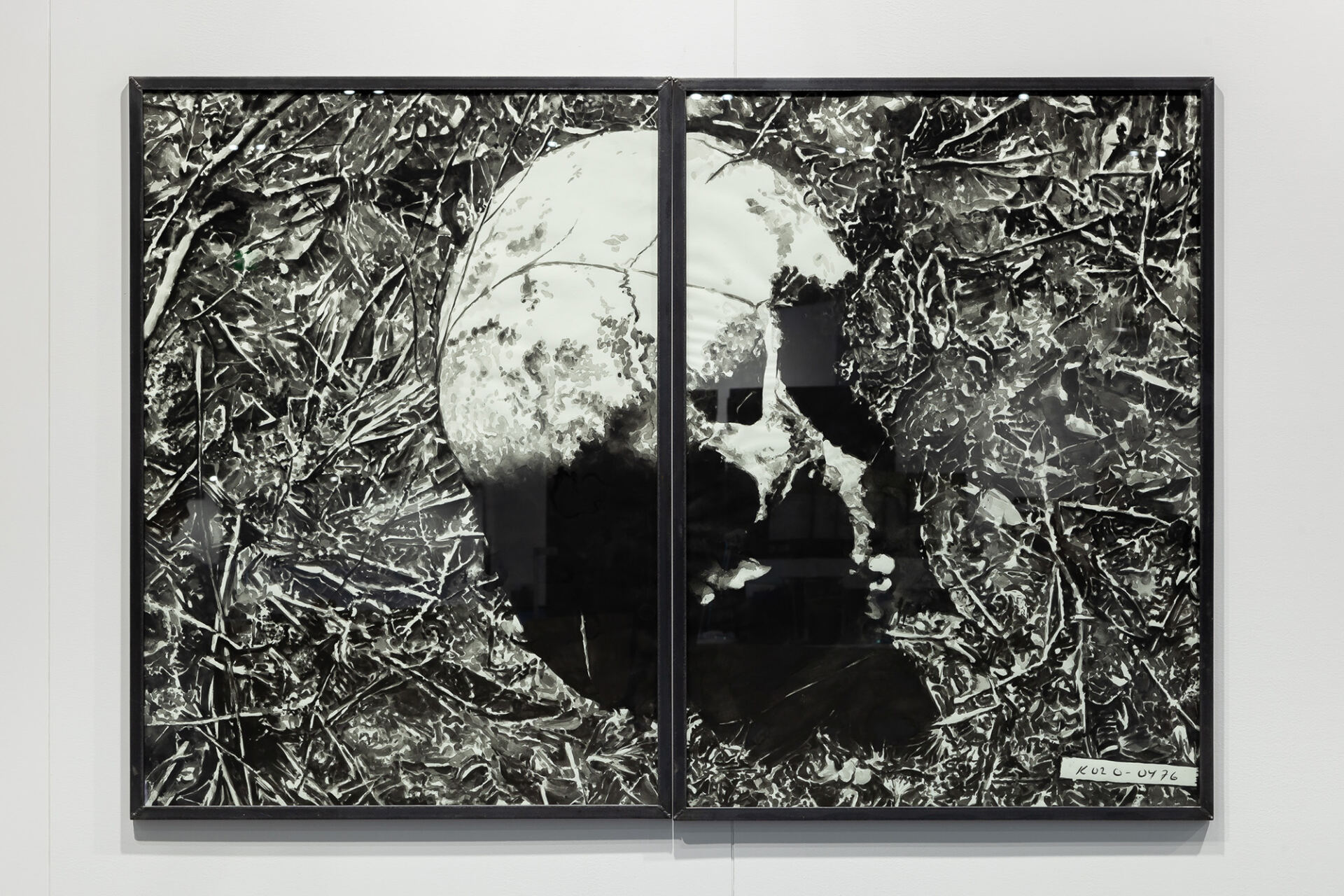Fair
For the 2024 exhibit at Vienna contemporary, Eugster || Belgrade proposes a presentation of completely new large-scale drawings by Serbian artist, Vladimir Miladinović, followed by a condensed archival selection of drawings, precedent to his current artistic trajectory. As we know from Miladinović’s artistic practice, his works have always been devoted to the complex relationship of geopolitics, media-manipulation and how we, as witnesses, reinterpret history. For the fair, Vladimir will showcase new watercolor drawings based on his extensive research of documents found in the archive of the ICTY-International Court Tribunal for the Former Yugoslavia. In this series, with names of pieces deriving from anonymous codes like 01-U003-0018 (2024), he worked with the same materials and photographs used for Disturbed soil (2018), a series of large-scale charcoal drawings of landscapes housing the recent memories of the history of the Balkan region. With a meticulously precise approach, the artist works with the matters at hand in a therapeutic and engaged way. By carefully transcribing the photographic material and immersing himself in the content, he equals the effort with processing of the emotions elicited by the images. We could also note that this contrasts the popular hyper-productive nature of creating art, and opposes the modern tendency to quickly consume images, often becoming desensitised to what we are expected to digest in them.
The most recent selection of photos was made with a slightly different intent than with the picturesque landscapes. By choosing the photographs that show a more direct visual, like a car crash scene, Vladimir is literally tracing paths of untold stories that the photographs offer us. The images are obviously very visually inspected for the classical values of paintings like composition, contrast and motifs, and through their artistic values, they provide space for reflection of very tangible ideas, in this case, the historical conduct of violence. Even so, they are simultaneously evolving into representations of ideas that we can also understand through symbolical meanings, such as in the work, Ko20-0476 (2024), that shows a scull in the grass, a symbol used through art history as a nod to vanitas, transformation and impermanence, to name a few.
As an addition to the main focus of the presentation that are the wall-pieces, the booth is supported with steel objects in the space that resemble archival folder cabinets or black rooms for viewing and developing pictures. Hanging inside the constructions is a variety of drawings from his recent series, Newspapers, Screenshots and, lastly, Kino, drawings of movie posters found in local theatres. All drawings are indicative of a certain period in time and reflected upon with utilising content from newspaper covers and screenshots of absurd headlines. The visitors are invited to symbolically but literally scan through the archives of Vladimir’s artistic practice, the same way that he has been using the process of archival research since the beginning of his career, as its indispensable part. Vladimir’s work is guided by a line of thinking about the current and pervasive shapings of societies, through war, trauma, culture and other spheres of shared experiences, always relevant and repeating.











